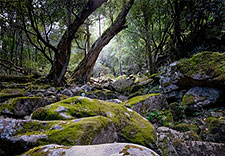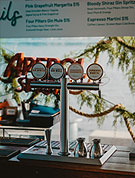NAATI Certified Translation for Kirribilli
Certified translation examples from Sydney Translation Services.
Driver License
Birth Certificate
Passport Translation
Marriage Certificate
Death Certificate
Divorce Certificate
Degree Certificate
No-Criminal Record
The Nepali Language

- Origin and Evolution: Nepali, originally known as Khas Kura or Gorkhali, belongs to the Indo-Aryan branch of the Indo-European languages. It evolved from Sanskrit and has been influenced by various languages, including Tibetan and Persian. Over time, it has become the lingua franca of Nepal, unifying the diverse linguistic communities within the country.
- Official Language: Nepali is the official language of Nepal and is also spoken in parts of India, particularly in the states of Sikkim and West Bengal (notably in Darjeeling), as well as in Bhutan and Myanmar. It is written in the Devanagari script, which it shares with Hindi, Marathi, and Sanskrit.
- Literary and Cultural Significance: Nepali has a rich literary history with a wide range of poetry, folk songs, and classical texts. The language has produced many notable writers and poets, such as Bhanubhakta Acharya, who is regarded as the first poet of Nepal and is known for translating the Ramayana into Nepali, making it accessible to the general public. The language continues to be a vibrant part of Nepal's cultural identity.
About Kirribilli
 Kirribilli is a suburb of Sydney, in the state of New South Wales, Australia. One of the city's most established and affluent neighbourhoods, it is located three kilometres north of the Sydney central business district, in the local government area administered by North Sydney Council. Kirribilli is a harbourside suburb, sitting on the Lower North Shore of Sydney Harbour. The name Kirribilli is derived from an Aboriginal word Kiarabilli, which means 'good fishing spot'. The suburb initially formed in the vicinity of Jeffrey Street and was subsequently part of a grant to James Milson (1785-1872), after whom Milsons Point was named. The area was largely covered in native bush. As the decades passed, the land was cleared bit by bit and sub-divided, first for the construction of large family residences during the 1840s, secondly for the erection of Victorian terrace houses from the 1860s onwards, and finally for 20th-Century flats. Prominent early landowners in Kirribilli included members of the Campbell, Jeffrey and Gibbes families. Colonel John George Nathaniel Gibbes (1787-1873), the Collector of Customs for New South Wales, built 'Wotonga' - the forerunner of Admiralty House - in 1842-43 on a 5-acre (20,000 m2) site which he leased, and then purchased, from the Campbells. Gibbes' son, William John Gibbes, lived nearby in Beulah House during the 1840s. Beulah was later lived in by the Riley and Lasseter families. Eventually, the house was demolished and its grounds subdivided into numerous residential blocks which were put up for public auction in 1905.
Kirribilli is a suburb of Sydney, in the state of New South Wales, Australia. One of the city's most established and affluent neighbourhoods, it is located three kilometres north of the Sydney central business district, in the local government area administered by North Sydney Council. Kirribilli is a harbourside suburb, sitting on the Lower North Shore of Sydney Harbour. The name Kirribilli is derived from an Aboriginal word Kiarabilli, which means 'good fishing spot'. The suburb initially formed in the vicinity of Jeffrey Street and was subsequently part of a grant to James Milson (1785-1872), after whom Milsons Point was named. The area was largely covered in native bush. As the decades passed, the land was cleared bit by bit and sub-divided, first for the construction of large family residences during the 1840s, secondly for the erection of Victorian terrace houses from the 1860s onwards, and finally for 20th-Century flats. Prominent early landowners in Kirribilli included members of the Campbell, Jeffrey and Gibbes families. Colonel John George Nathaniel Gibbes (1787-1873), the Collector of Customs for New South Wales, built 'Wotonga' - the forerunner of Admiralty House - in 1842-43 on a 5-acre (20,000 m2) site which he leased, and then purchased, from the Campbells. Gibbes' son, William John Gibbes, lived nearby in Beulah House during the 1840s. Beulah was later lived in by the Riley and Lasseter families. Eventually, the house was demolished and its grounds subdivided into numerous residential blocks which were put up for public auction in 1905.
Other Nepali Translation Service Locations
Kingsford Nepali Translator, Kingsgrove Nepali Translator, Kingswood Nepali Translator, Kogarah Nepali Translator, Ku-ring-gai Chase Nepali Translator, La Perouse Nepali Translator.




 Kirribilli is a suburb of Sydney, in the state of New South Wales, Australia. One of the city's most established and affluent neighbourhoods, it is located three kilometres north of the Sydney central business district, in the local government area administered by North Sydney Council. Kirribilli is a harbourside suburb, sitting on the Lower North Shore of Sydney Harbour. The name Kirribilli is derived from an Aboriginal word Kiarabilli, which means 'good fishing spot'. The suburb initially formed in the vicinity of Jeffrey Street and was subsequently part of a grant to James Milson (1785-1872), after whom Milsons Point was named. The area was largely covered in native bush. As the decades passed, the land was cleared bit by bit and sub-divided, first for the construction of large family residences during the 1840s, secondly for the erection of Victorian terrace houses from the 1860s onwards, and finally for 20th-Century flats. Prominent early landowners in Kirribilli included members of the Campbell, Jeffrey and Gibbes families. Colonel John George Nathaniel Gibbes (1787-1873), the Collector of Customs for New South Wales, built 'Wotonga' - the forerunner of Admiralty House - in 1842-43 on a 5-acre (20,000 m2) site which he leased, and then purchased, from the Campbells. Gibbes' son, William John Gibbes, lived nearby in Beulah House during the 1840s. Beulah was later lived in by the Riley and Lasseter families. Eventually, the house was demolished and its grounds subdivided into numerous residential blocks which were put up for public auction in 1905.
Kirribilli is a suburb of Sydney, in the state of New South Wales, Australia. One of the city's most established and affluent neighbourhoods, it is located three kilometres north of the Sydney central business district, in the local government area administered by North Sydney Council. Kirribilli is a harbourside suburb, sitting on the Lower North Shore of Sydney Harbour. The name Kirribilli is derived from an Aboriginal word Kiarabilli, which means 'good fishing spot'. The suburb initially formed in the vicinity of Jeffrey Street and was subsequently part of a grant to James Milson (1785-1872), after whom Milsons Point was named. The area was largely covered in native bush. As the decades passed, the land was cleared bit by bit and sub-divided, first for the construction of large family residences during the 1840s, secondly for the erection of Victorian terrace houses from the 1860s onwards, and finally for 20th-Century flats. Prominent early landowners in Kirribilli included members of the Campbell, Jeffrey and Gibbes families. Colonel John George Nathaniel Gibbes (1787-1873), the Collector of Customs for New South Wales, built 'Wotonga' - the forerunner of Admiralty House - in 1842-43 on a 5-acre (20,000 m2) site which he leased, and then purchased, from the Campbells. Gibbes' son, William John Gibbes, lived nearby in Beulah House during the 1840s. Beulah was later lived in by the Riley and Lasseter families. Eventually, the house was demolished and its grounds subdivided into numerous residential blocks which were put up for public auction in 1905.